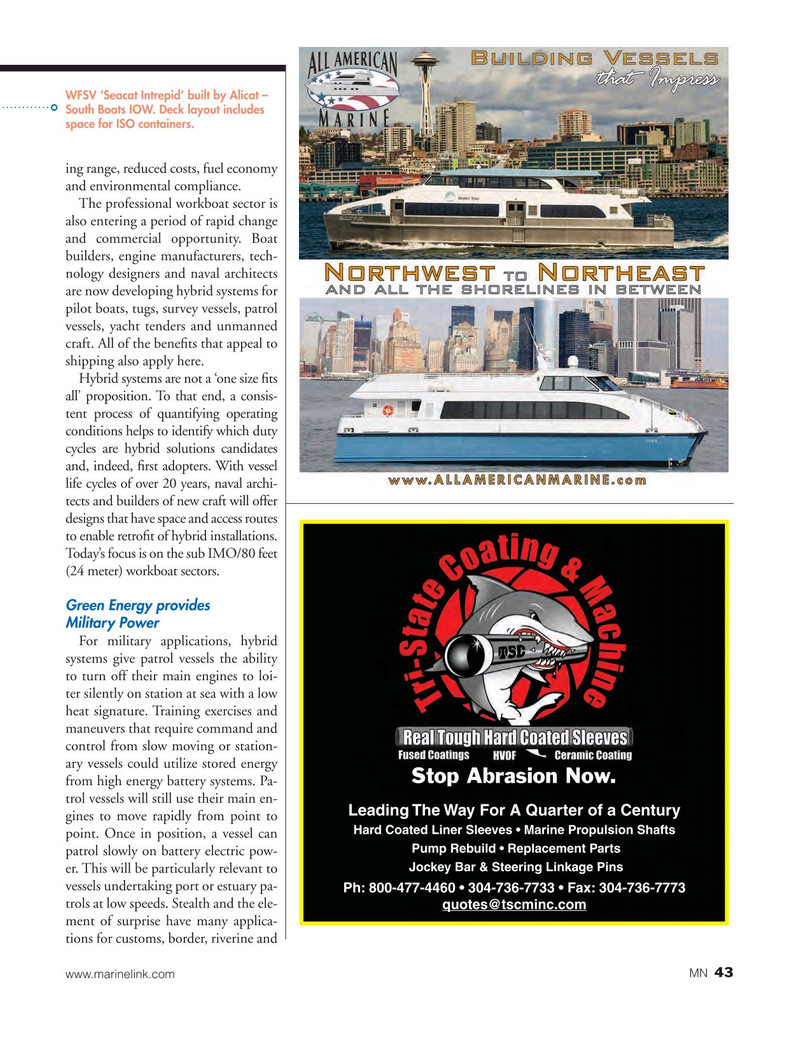
Page 43: of Marine News Magazine (June 2016)
Combat & Patrol Craft Annual
Read this page in Pdf, Flash or Html5 edition of June 2016 Marine News Magazine
W WFSV ‘Seacat Intrepid’ built by Alicat –
South Boats IOW. Deck layout includes space for ISO containers.
ing range, reduced costs, fuel economy and environmental compliance.
The professional workboat sector is also entering a period of rapid change and commercial opportunity. Boat builders, engine manufacturers, tech- nology designers and naval architects are now developing hybrid systems for pilot boats, tugs, survey vessels, patrol vessels, yacht tenders and unmanned craft. All of the bene? ts that appeal to shipping also apply here.
Hybrid systems are not a ‘one size ? ts all’ proposition. To that end, a consis- tent process of quantifying operating conditions helps to identify which duty cycles are hybrid solutions candidates and, indeed, ? rst adopters. With vessel life cycles of over 20 years, naval archi- tects and builders of new craft will offer designs that have space and access routes to enable retro? t of hybrid installations.
Today’s focus is on the sub IMO/80 feet (24 meter) workboat sectors.
Green Energy provides
Military Power
For military applications, hybrid systems give patrol vessels the ability to turn off their main engines to loi- ter silently on station at sea with a low heat signature. Training exercises and maneuvers that require command and control from slow moving or station- ary vessels could utilize stored energy
Stop Abrasion Now.
from high energy battery systems. Pa- trol vessels will still use their main en-
Leading The Way For A Quarter of a Century gines to move rapidly from point to (ARD

 42
42

 44
44
